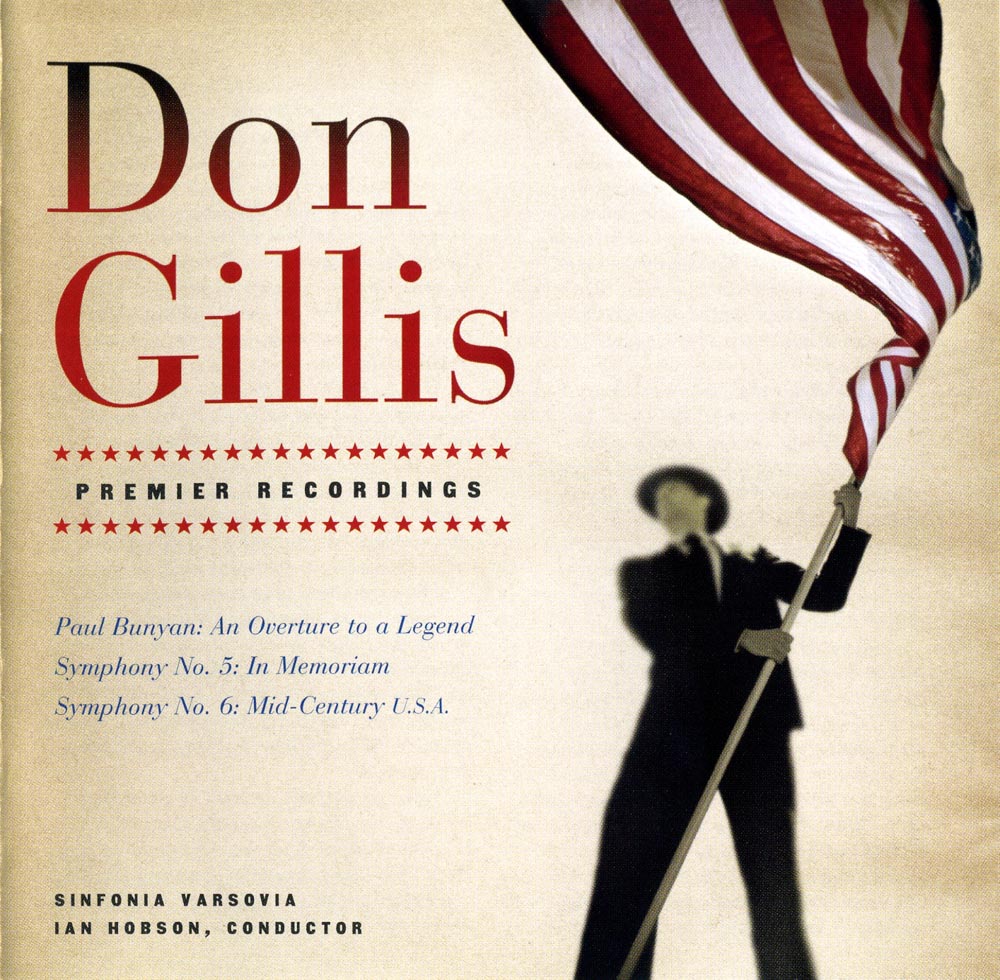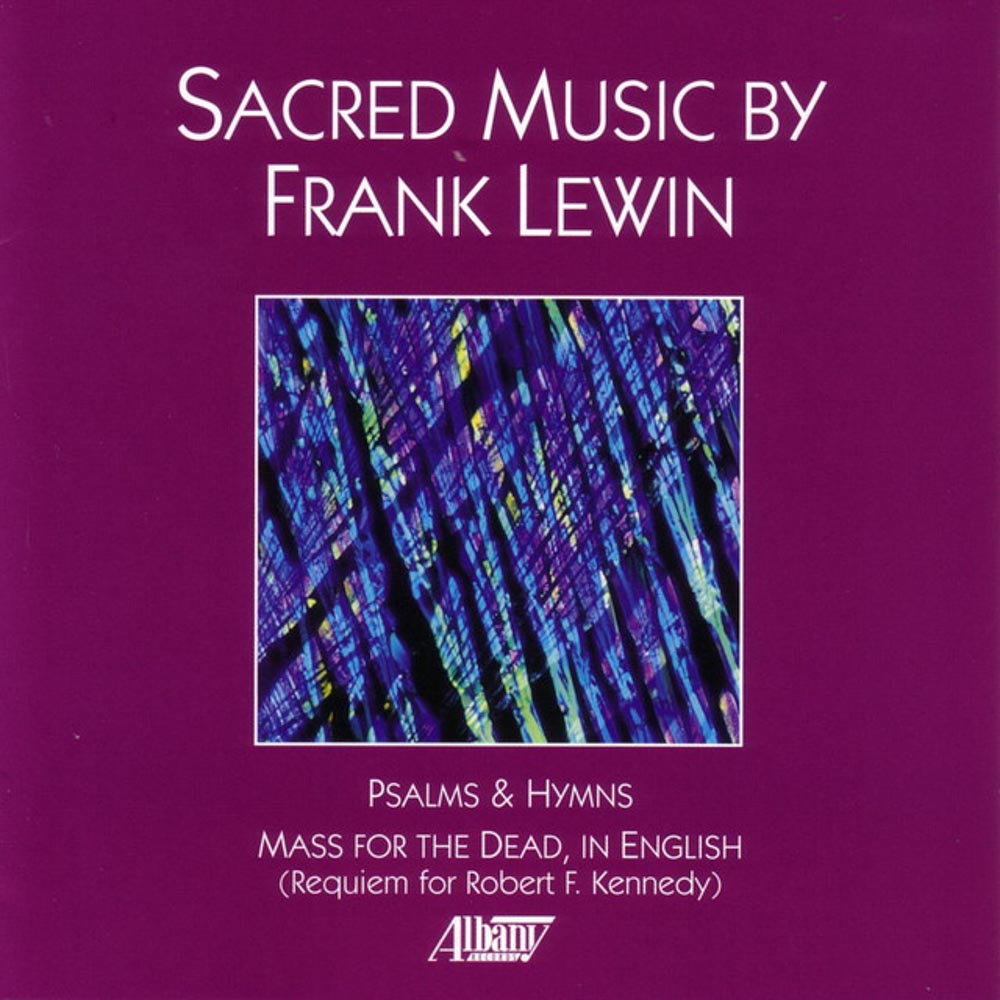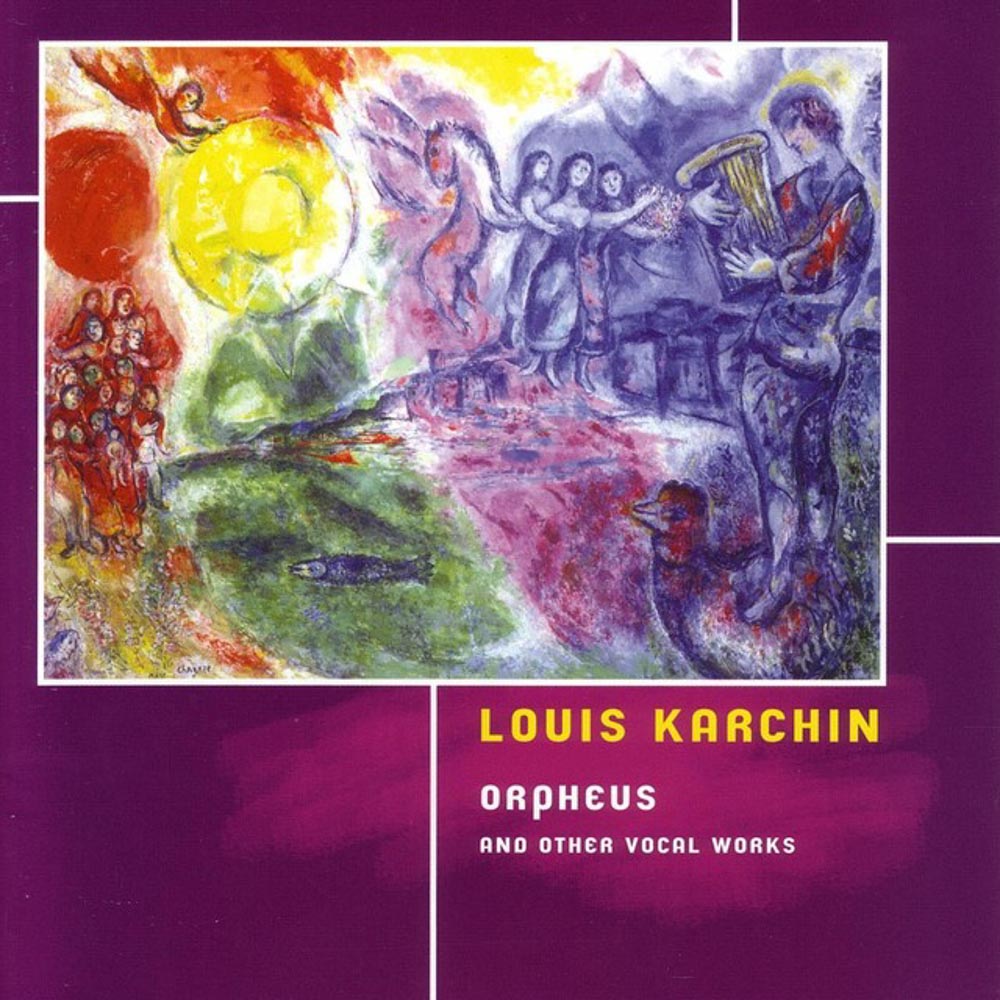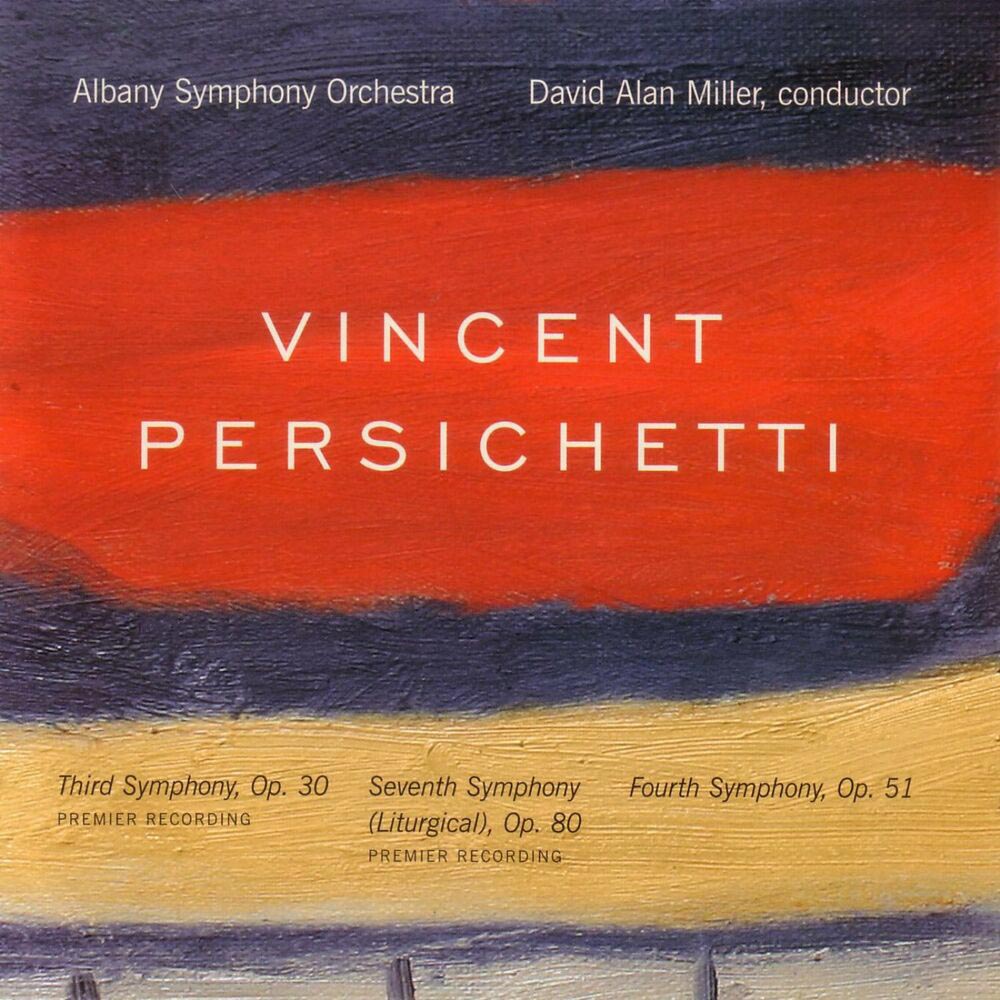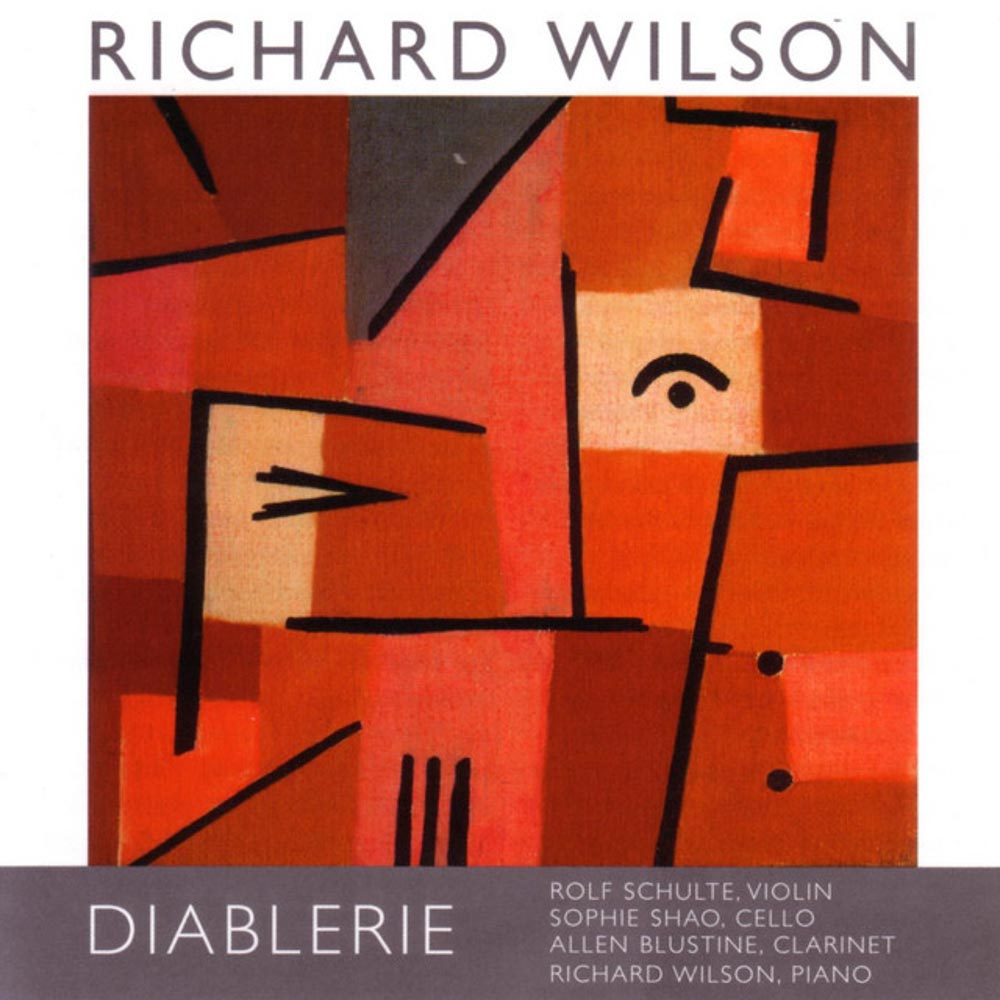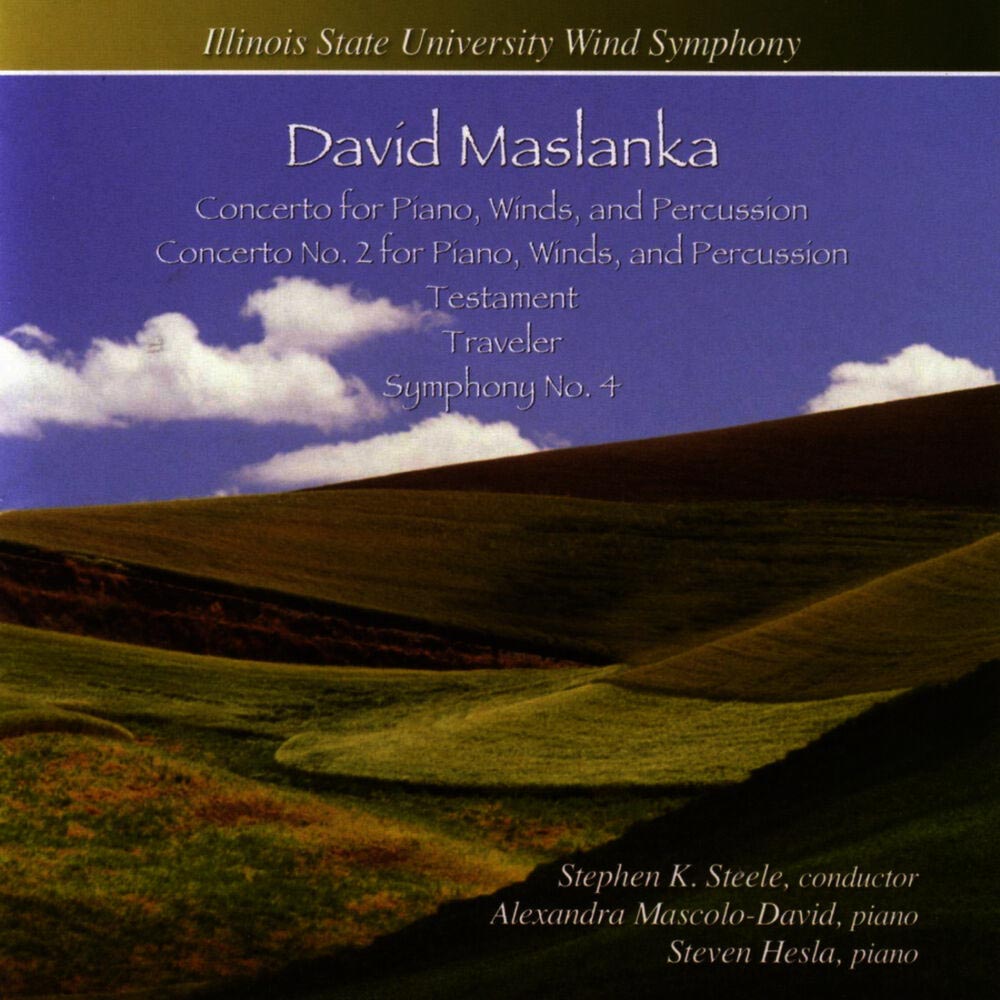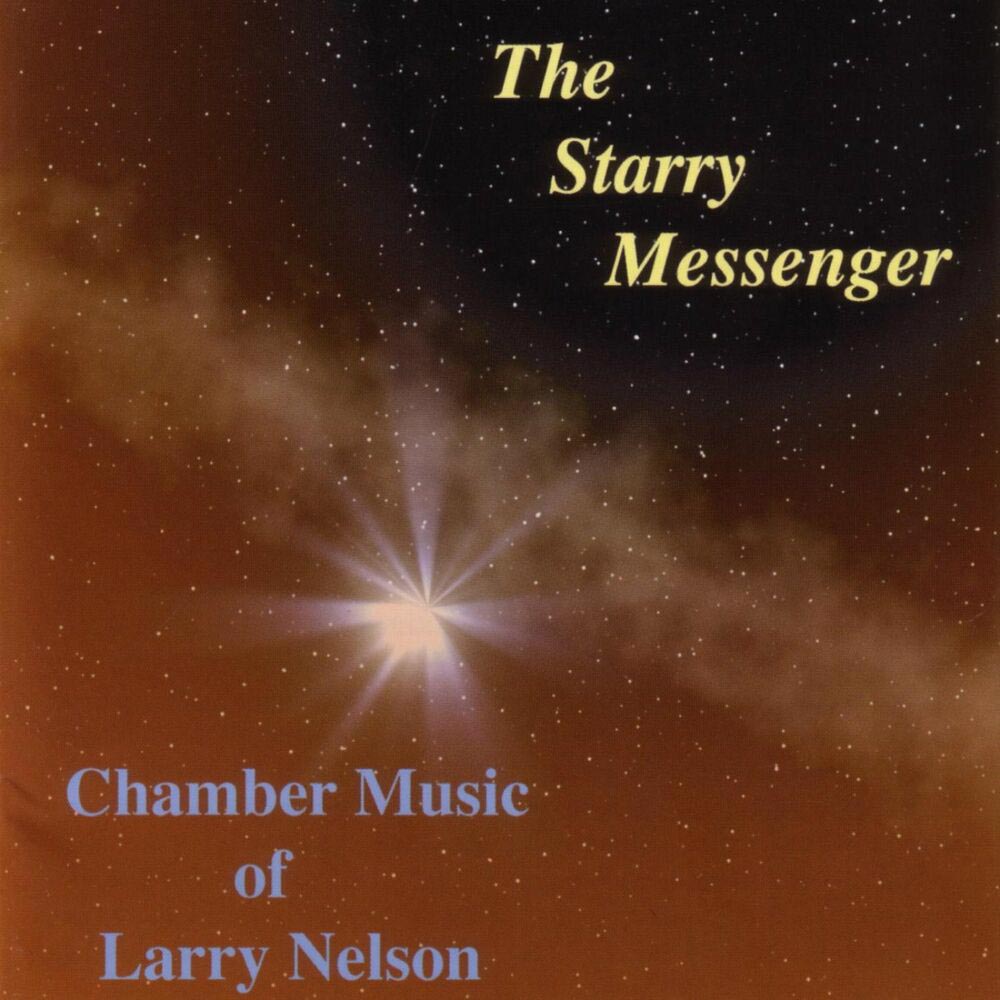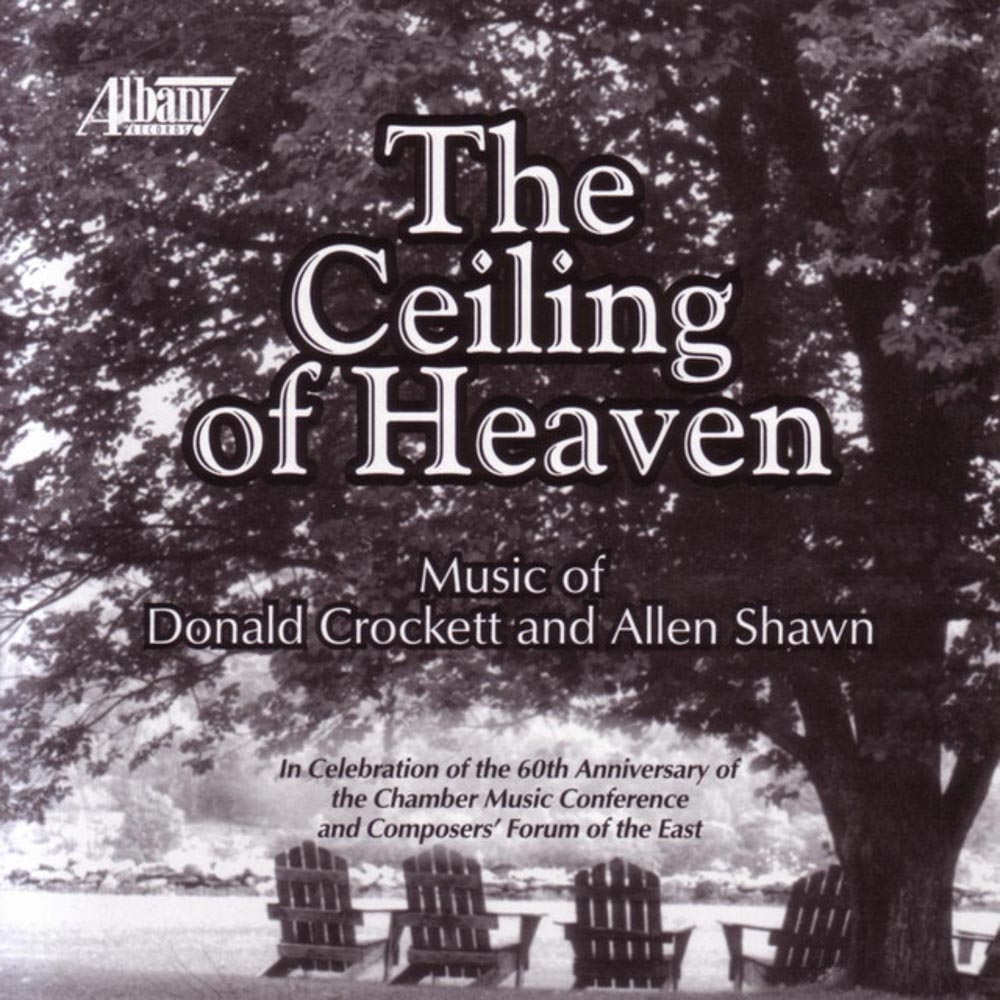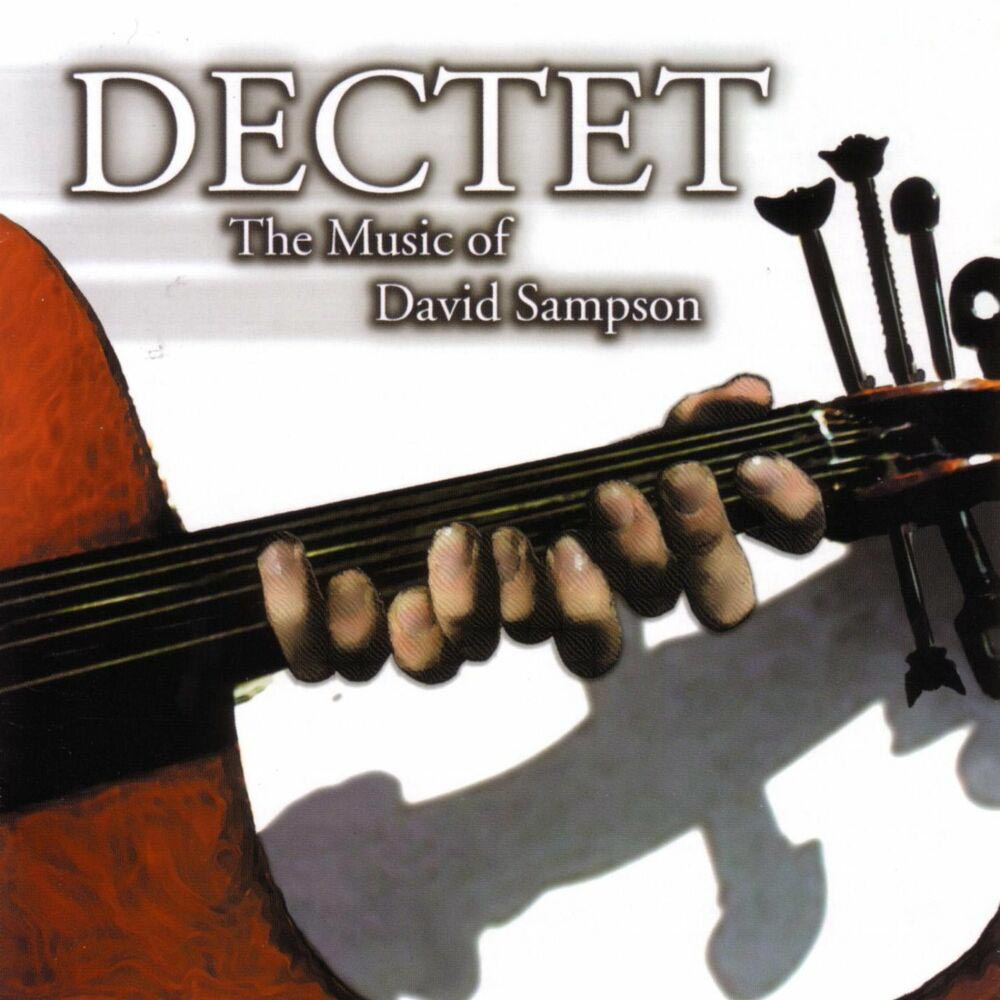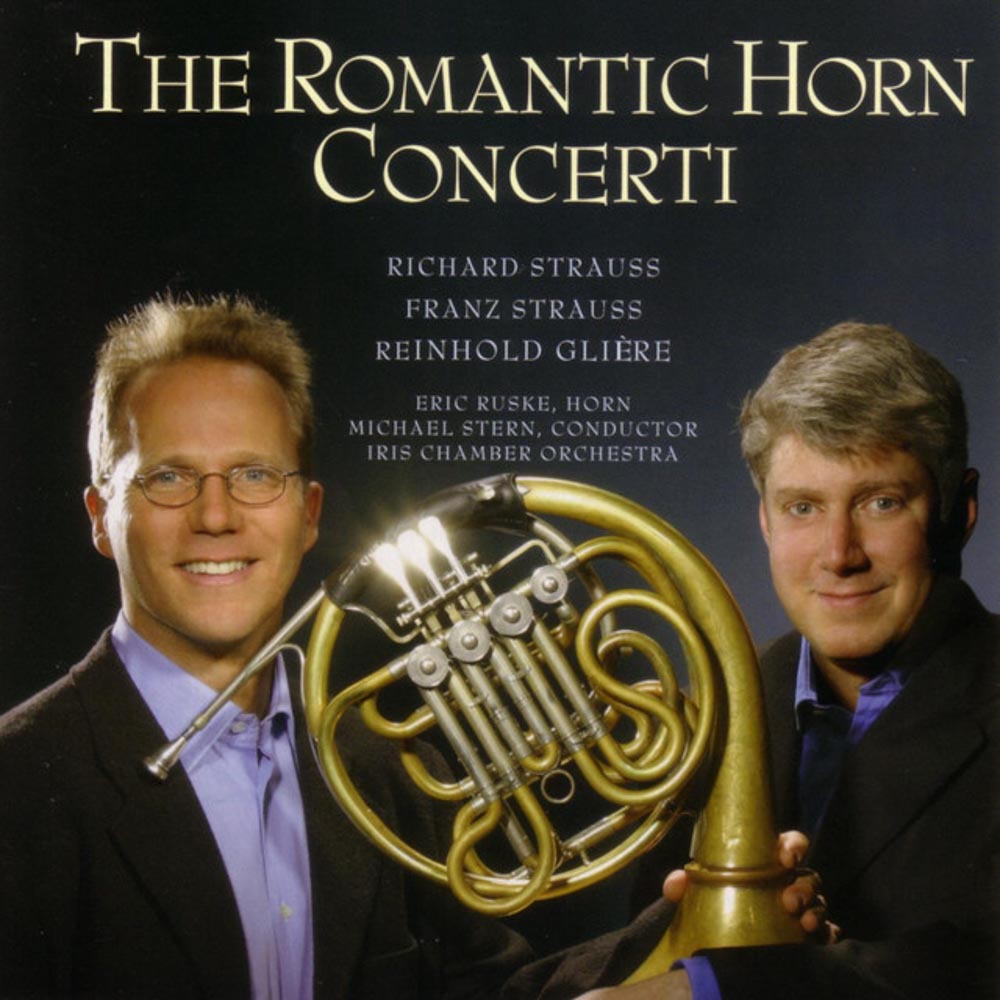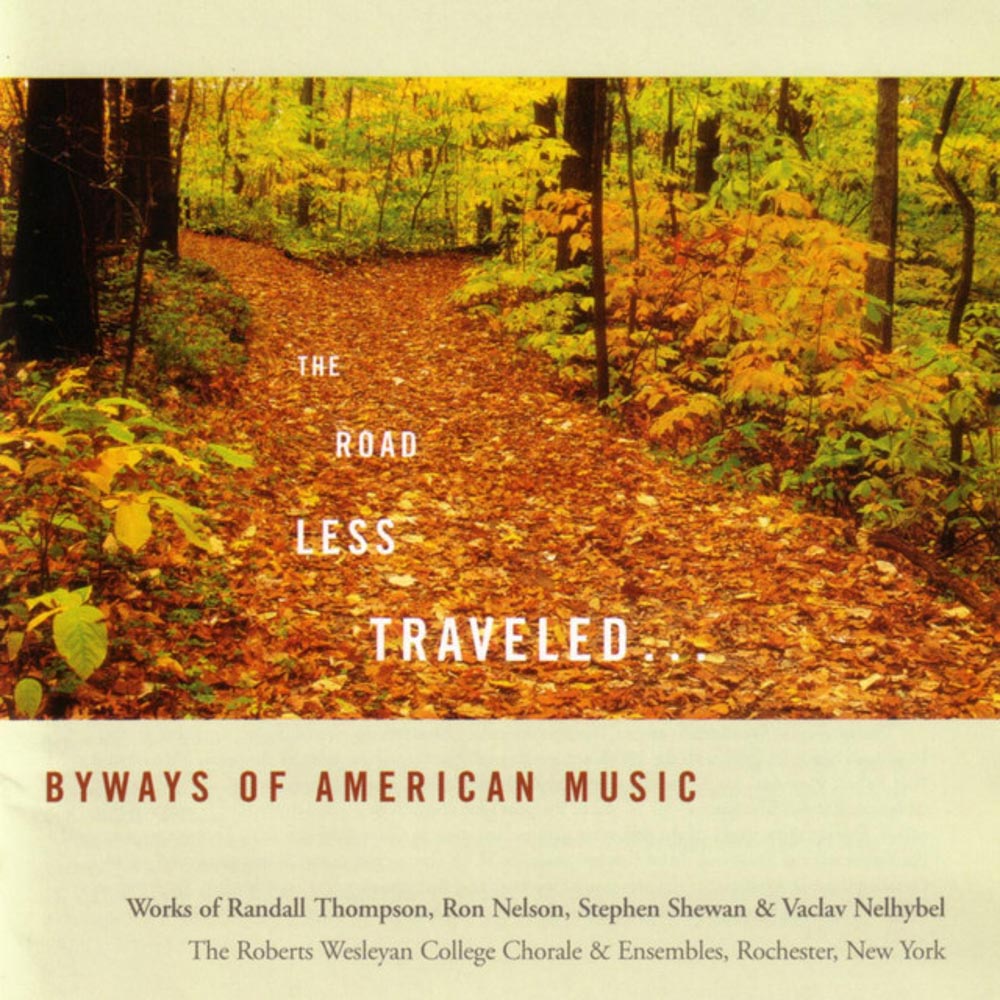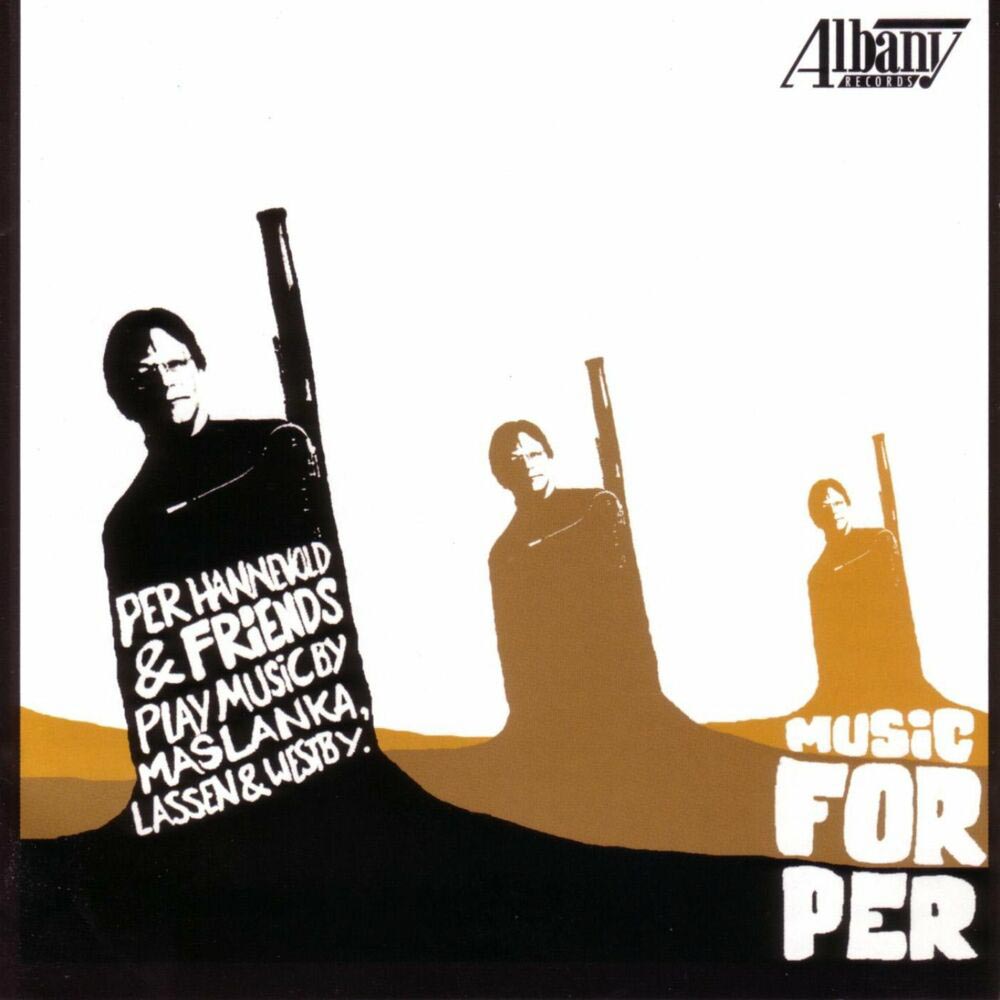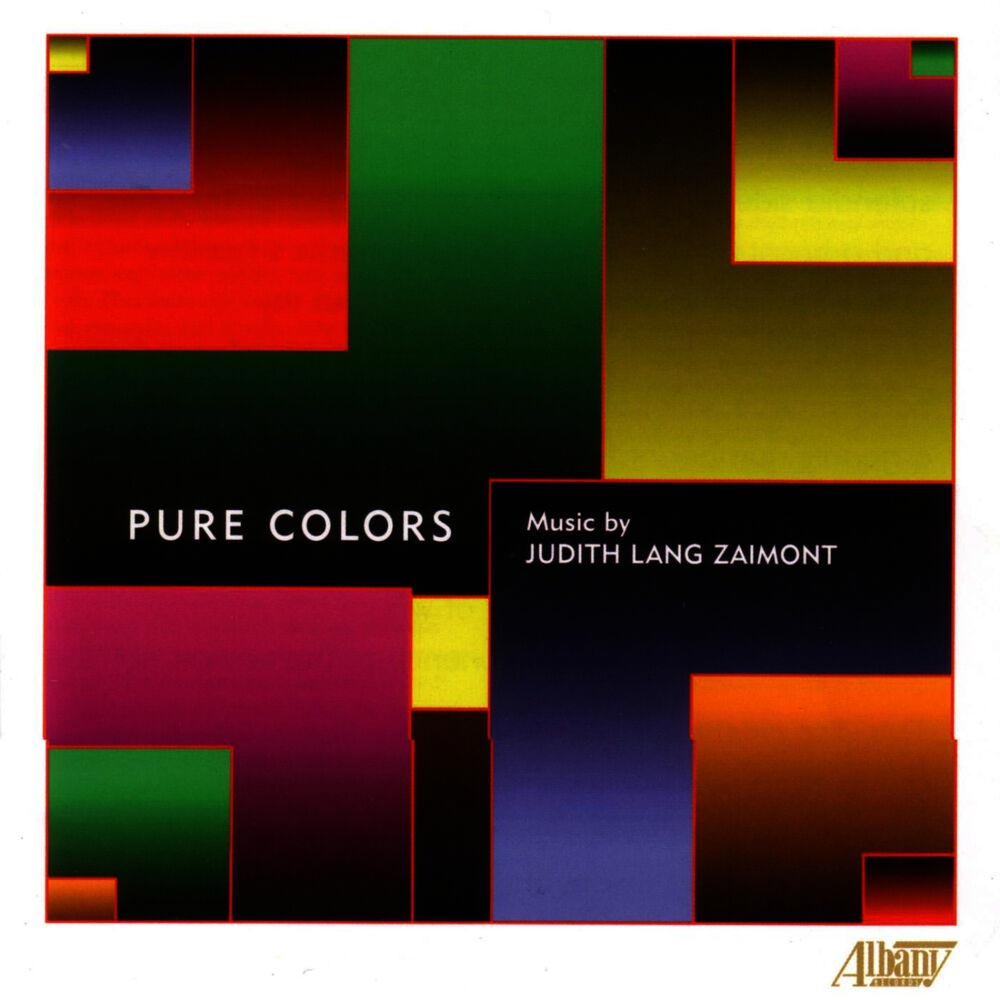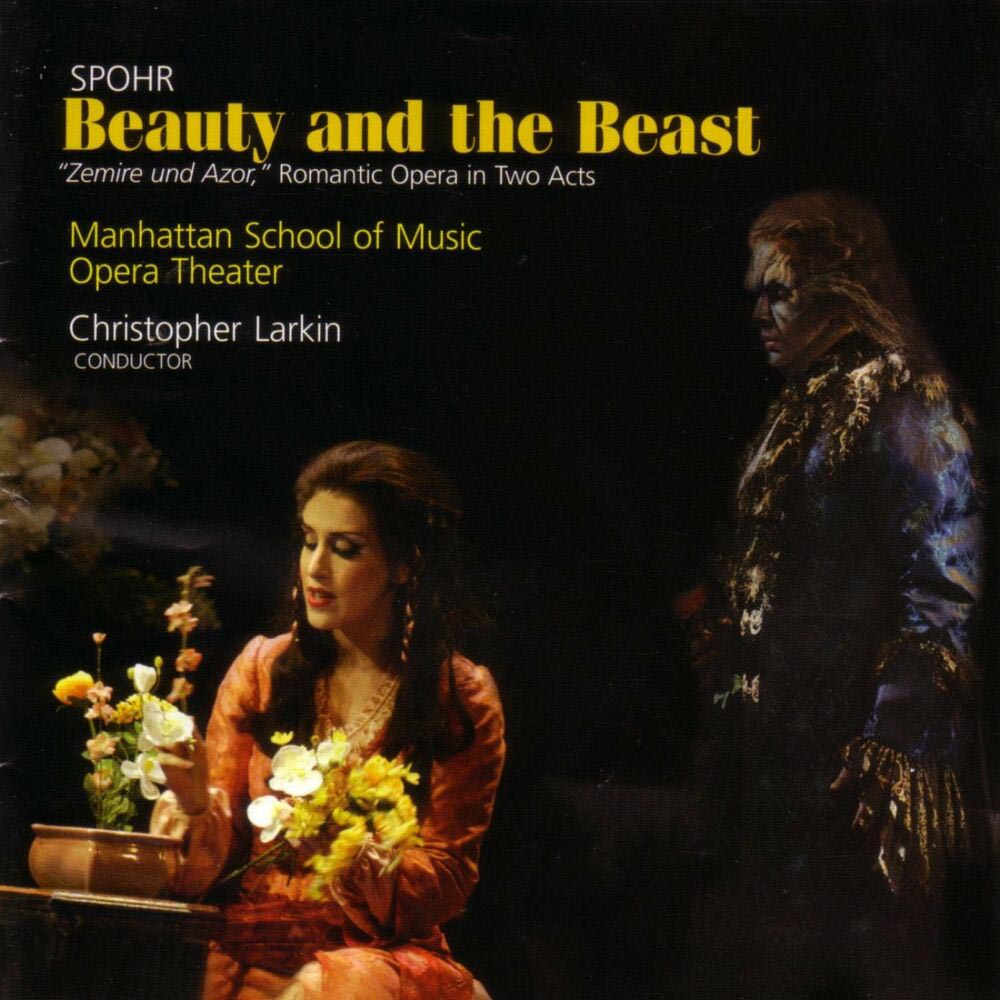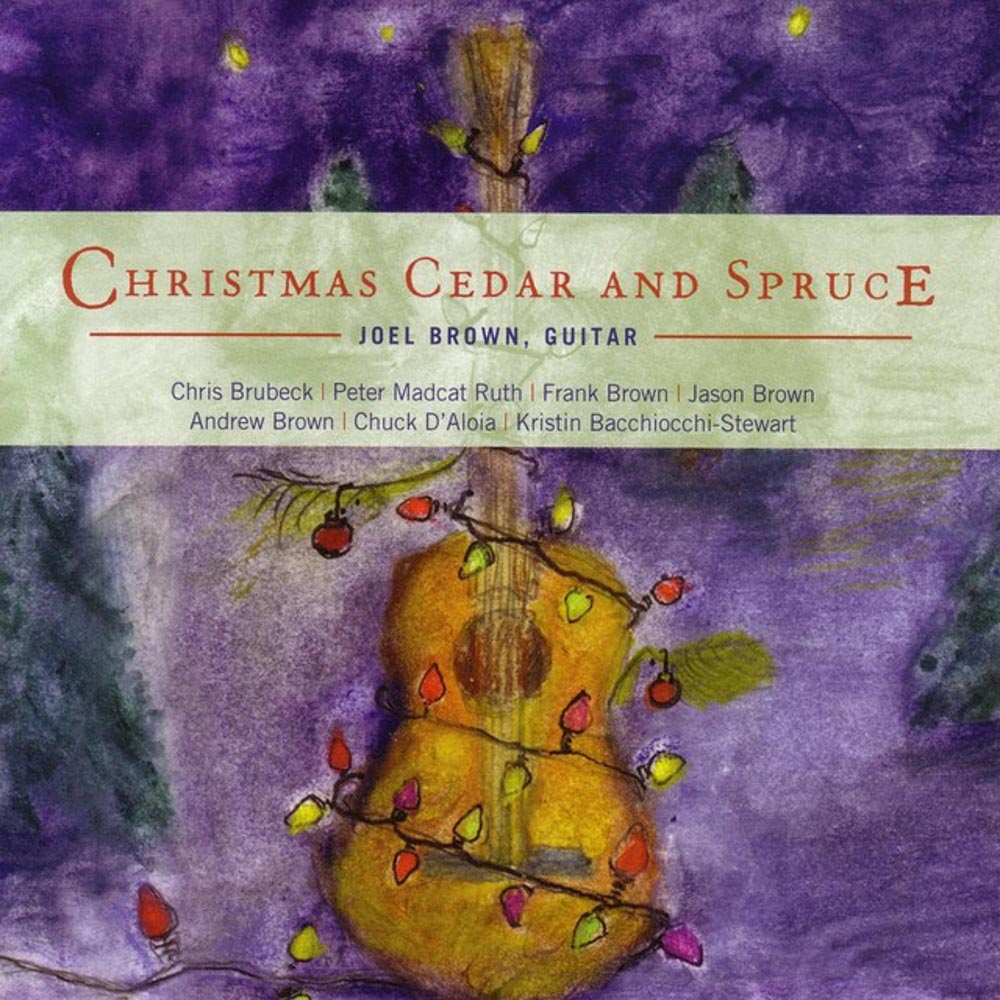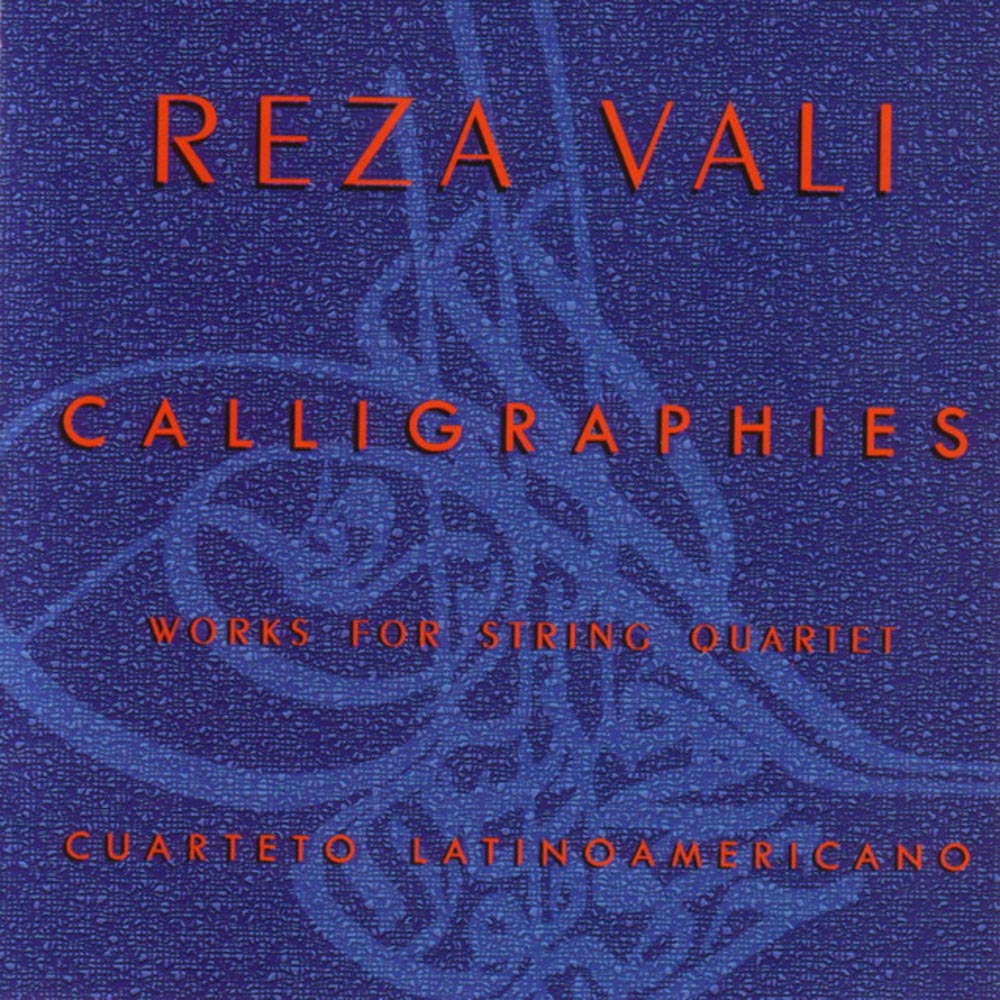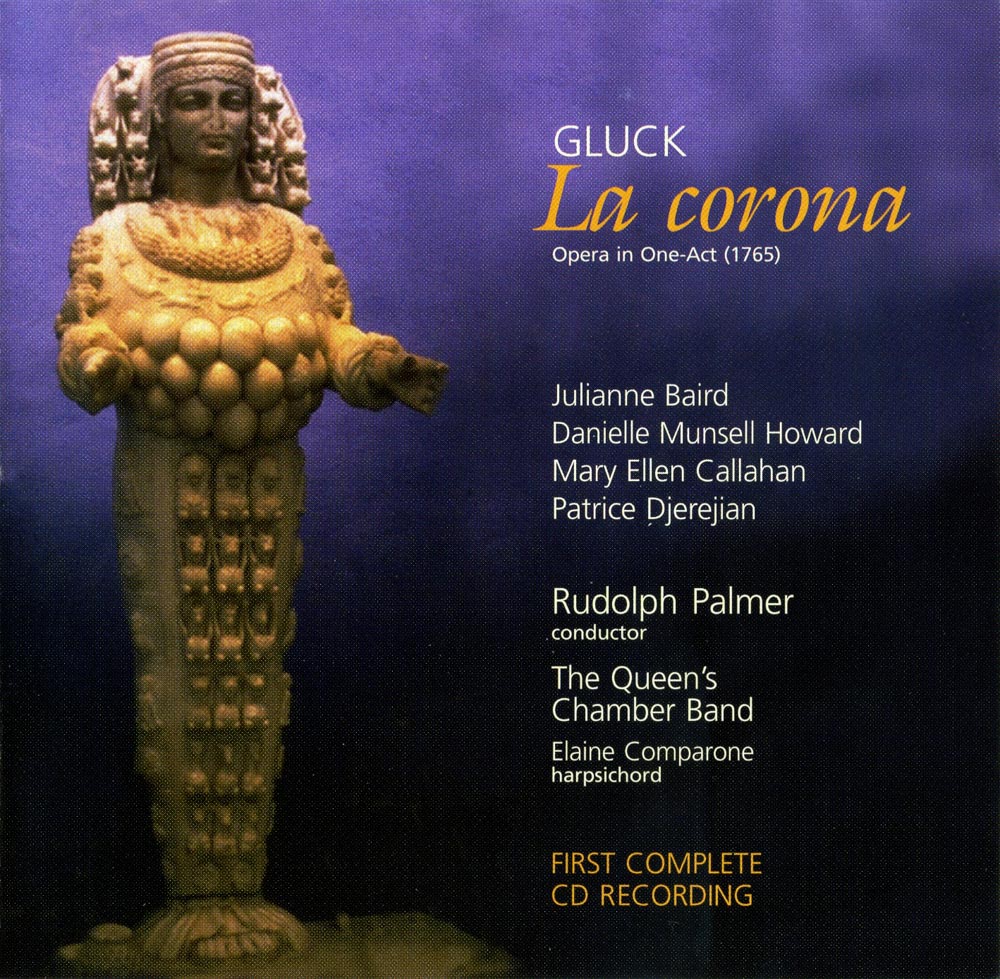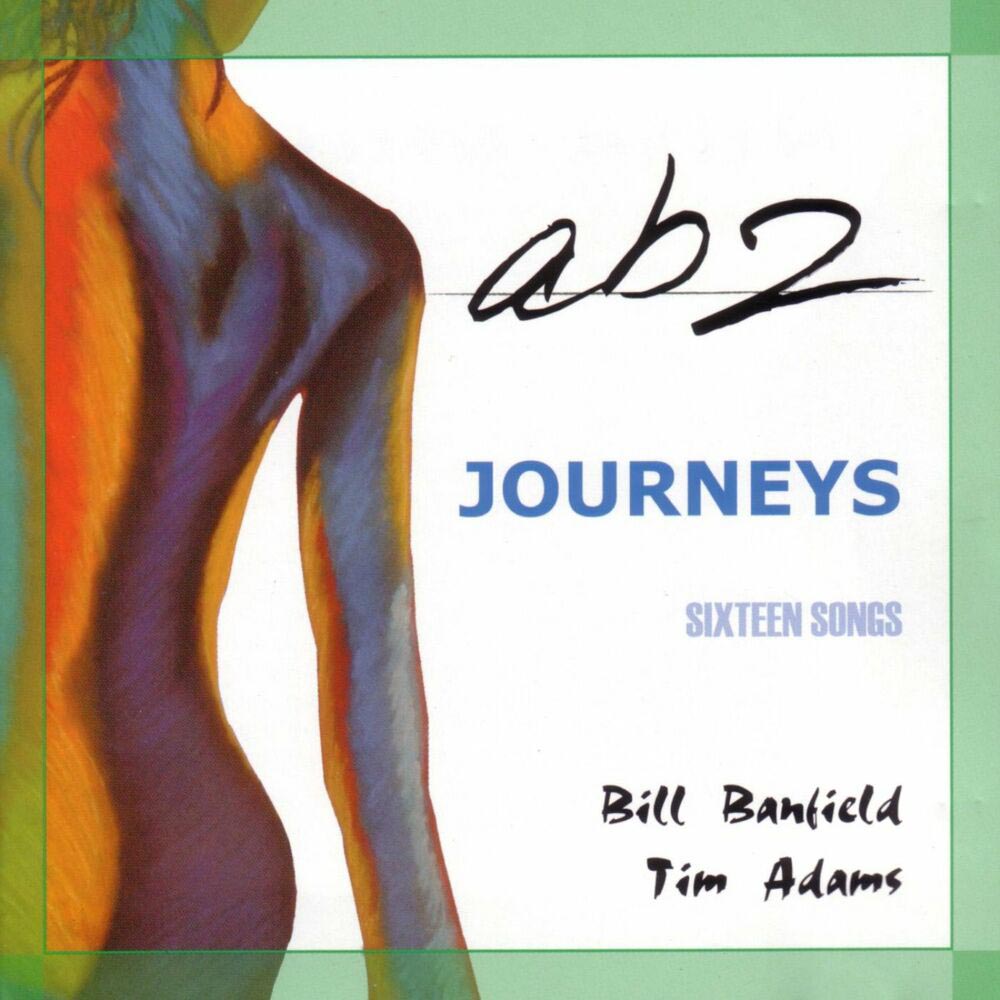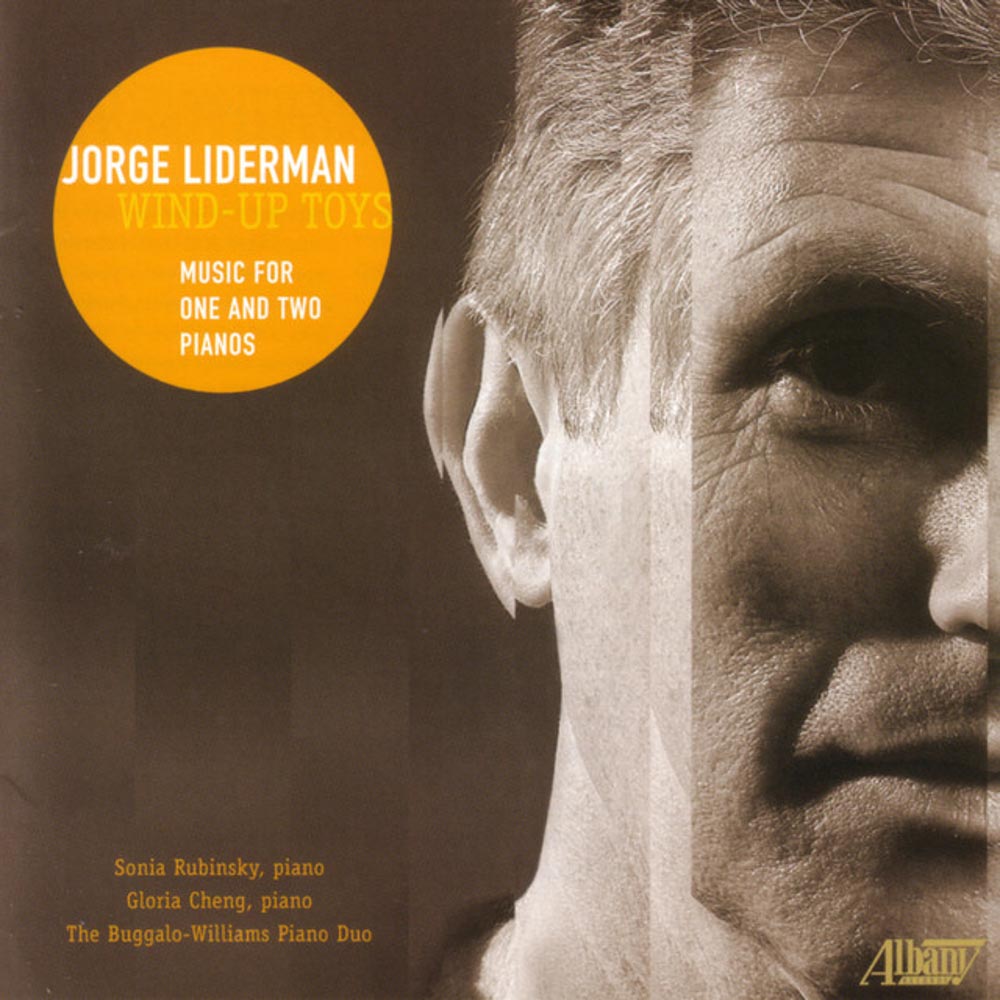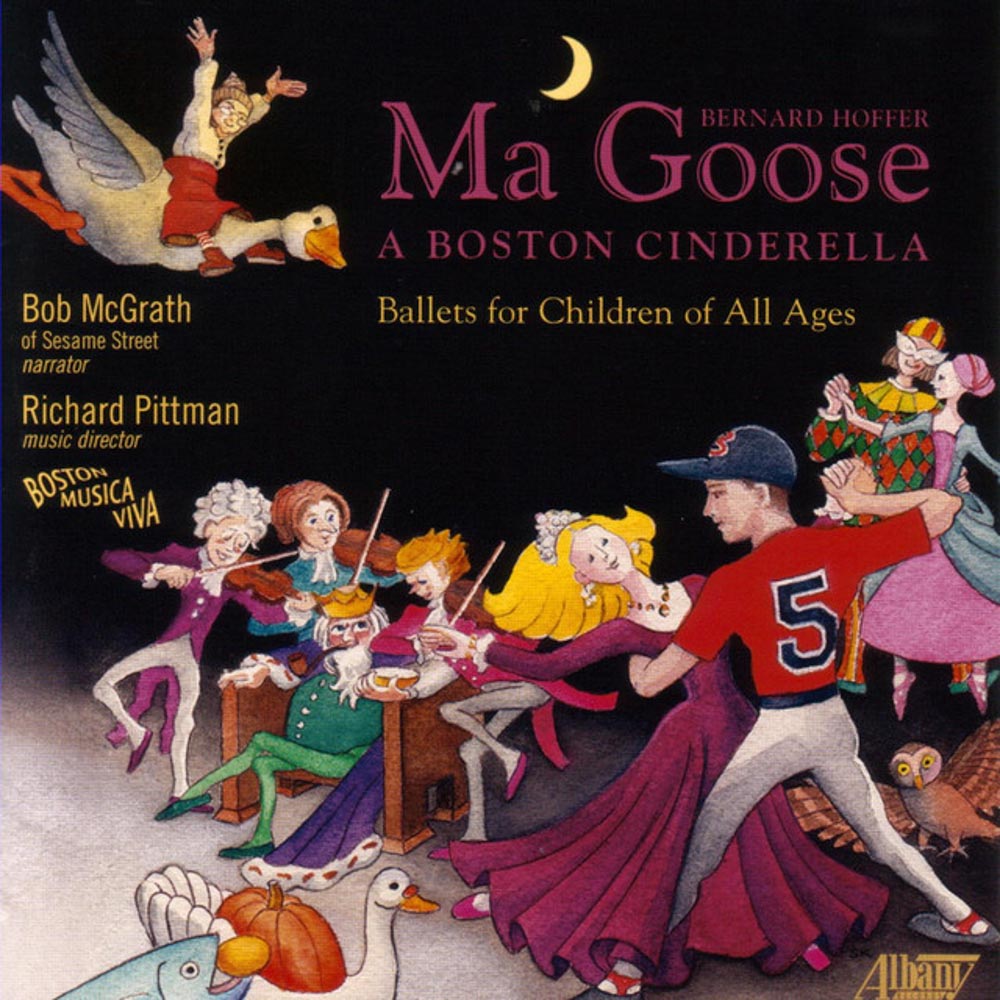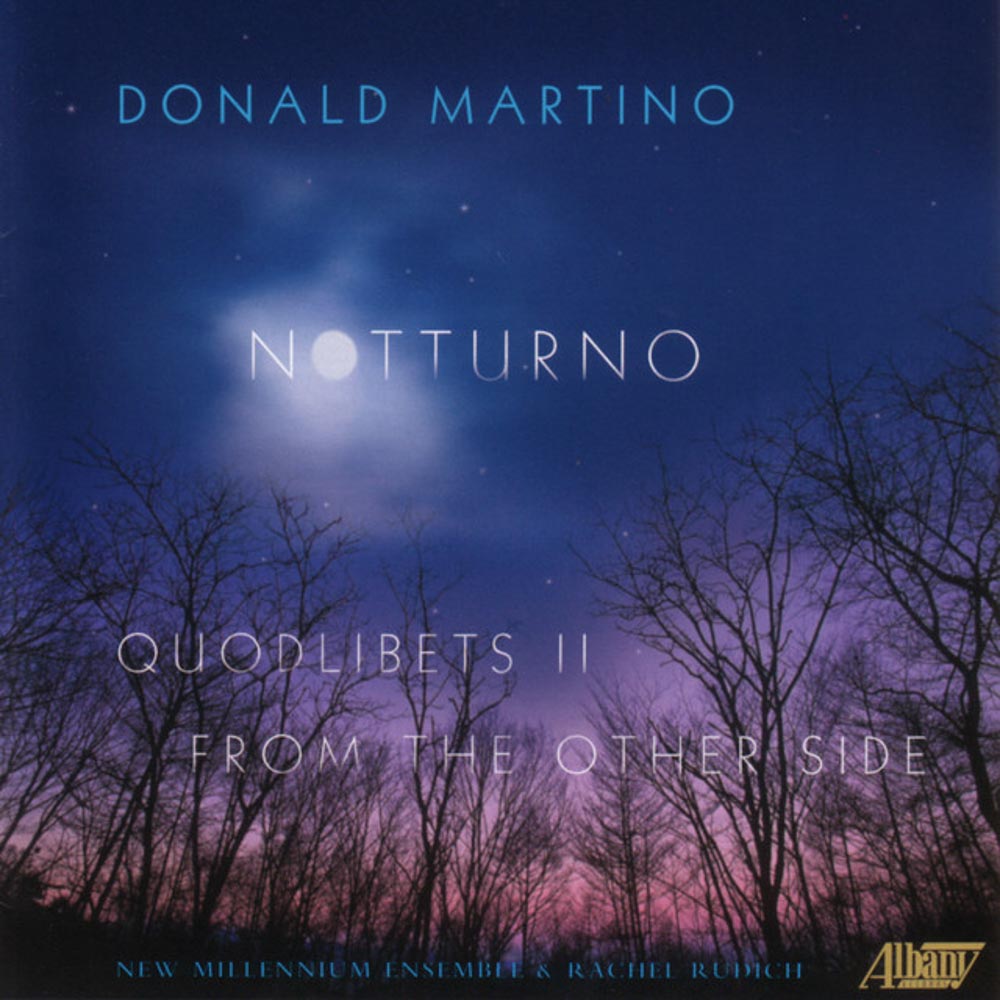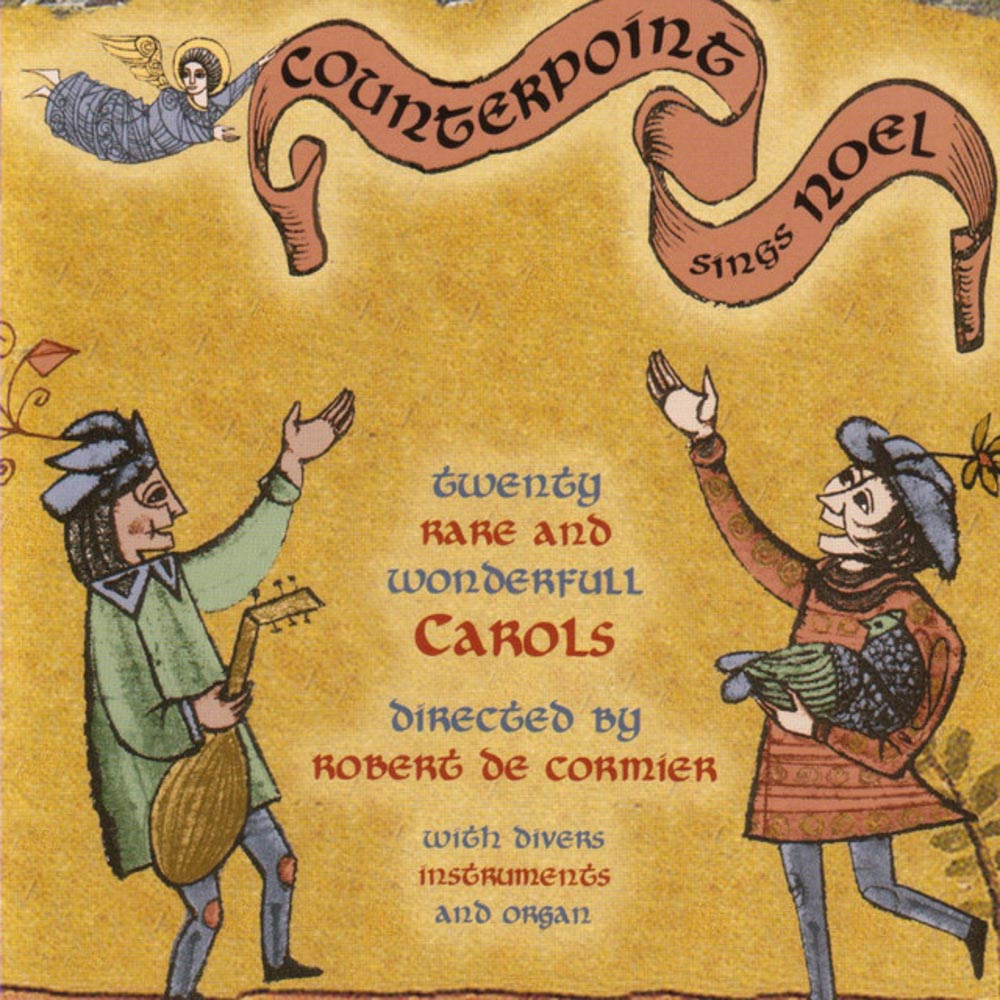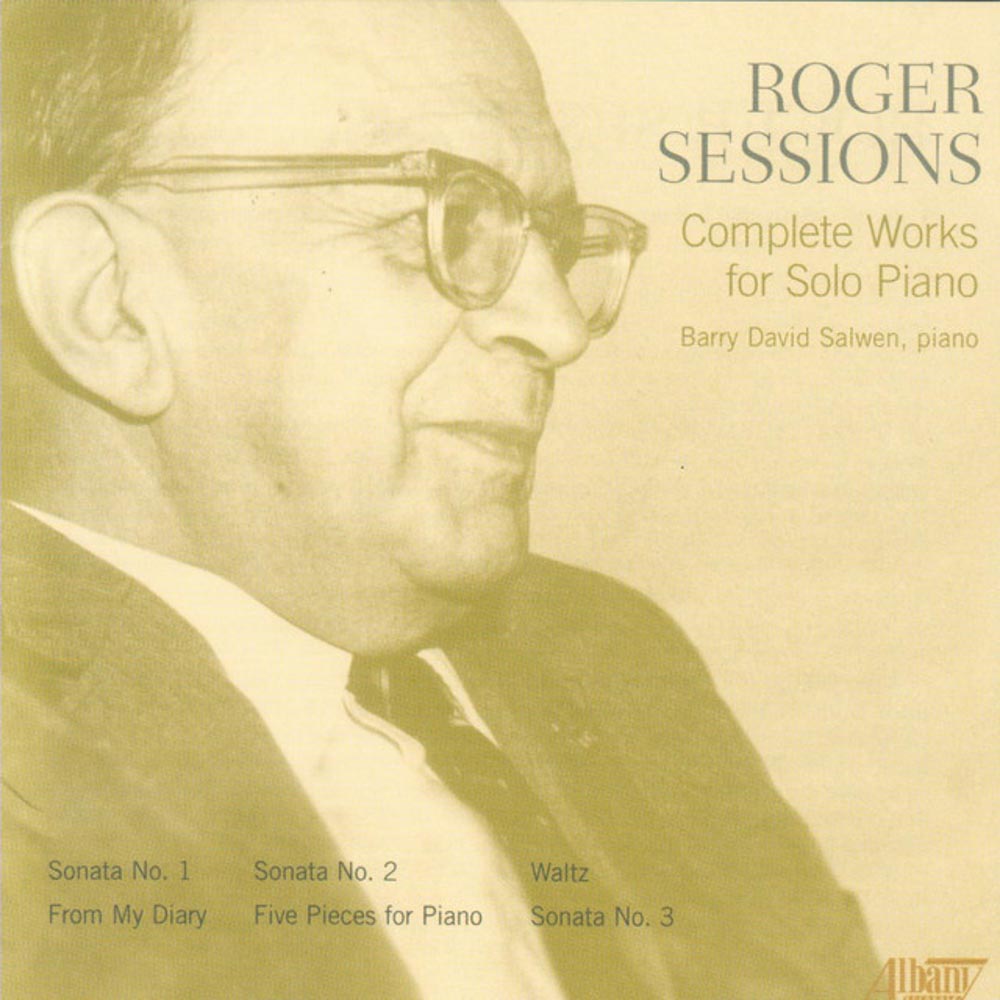Catalog #: TROY0768
Release Date: June 1, 2005OrchestralFirst: have you noticed how certain works, musical or visual, have an uncanny knack for perfectly evoking the period when they were created? That's one of the distinguishing features of the wonderful music on this new disc. The Symphony No. 6 sounds exactly like the late 1940's, much the same way that classic post-war movies conjure that period. In fact, the Symphony No.6 might be the most cinematic of all of Gillis' works in that form, with a wonderful sense of tension in the first movement that would be right at home on the soundtrack of The Big Sleep or This Gun for Hire. The second movement is full of excitement, like a modern analog to the scherzo of the Mendelssohn Scotch Symphony. The bluesiness of the third movement recalls Gershwin at his most relaxed, and the boisterous final movement with its cushy harmonies proves that Gillis had a lot in common with the great Broadway and Hollywood arrangers. The Symphony No.5 is probably the most "serious" of his symphonic output, reflecting the mood of the immediate postwar era. This contains one of his most beautiful slow movements (and if you're an ongoing fan of this series, you know how effective his quiet moments are); the keening sense of nostalgia often bears a striking resemblance to Bernard Herrmann (think in terms of his scores for The Devil and Daniel Webster or The Ghost and Mrs. Muir). The strictly "fun" piece of the collection is the Paul Bunyan Overture, full of rollicking spirits but, again, with a more contemplative sound. All of this is performed with the greatest enthusiasm and color by the Sinfonia Varsovia and Ian Hobson. An absolute must!
Catalog #: TROY0769
Release Date: August 1, 2005ChoralThis recording of Frank Lewin's sacred music is the fourth in his series on Albany Records. Other recordings include an opera, a disc of song cycles, and a recording of music written for films and television documentaries. The major work on this offering is the Mass for the Dead, in English, which was written as a requiem for Robert F. Kennedy. As the composer states, "The impetus for writing this Mass for the Dead came as I stood on the platform at Princeton Junction, amid a crowd of silent onlookers, as the train bearing the body of Robert F. Kennedy slowly rolled by on its way from New York to Washington. Vatican Council II had recently decreed that services were to be conducted in the vernacular, and thus this requiem mass was set to English words. It was first performed during a memorial service for Kennedy a year after his death on May 27, 1969."
Catalog #: TROY0770
Release Date: July 1, 2005VocalLouis Karchin was born in Philadelphia in 1951. His advanced musical training at Eastman and Harvard University included composition studies with Samuel Adler, Joseph Schwantner, Earl Kim, Fred Lerdahl, Arthur Berger and Leon Kirchner. He is a recipient of the Tanglewood Koussevitsky Award, the Bearns Prize from Columbia University, and awards from the National Endowment for the Arts. This new release exemplifies two complementary trends in Louis Karchin's recent vocal output: an ever-increasing comfort with and mastery of large-scale vocal and dramatic forms, powerfully represented here by Orpheus, and a concomitant reawakening of interest in the more intimate medium of voice and piano, illustrated by a choice and varied selection of his latest songs, which run the gamut from the most simple and restrained in texture and gesture to the most intricate, mercurial and virtuosic. Listeners whose taste in American music (particularly vocal) of a more advanced style will greatly appreciate this new release. If Karchin's style can summed up easily, one could say it exhibits the intensity of Kirchner (such as his vocal/chamber work Lily) combined with the spacious, impressionistic colors found in Schwantner's music.
Catalog #: TROY0771-72
Release Date: July 1, 2005OrchestralChances are, a long time ago, the first American composer you encountered outside the mainstream (i.e., Copland, Harris) was Vincent Persichetti, and you might still own that old Columbia LP of his Symphony No. 4 with Ormandy and the Philadelphia Orchestra. Here was music that was fresh, delightfully rhythmic, with a distinctive harmonic and instrumental sound that you could always recognize later on (especially if you picked up that wonderful Fennell LP of the Symphony for Band a few years later). There was always something concise about his music, not a note that didn't belong, and this was music that was really exciting to listen to. No one really wrote for brass the way he did. We are very happy indeed to present this new recording of the Symphony No. 4 along with world premiere performances of the post-war Symphony No. 3 and the religiously-inspired Symphony No. 7. Interestingly, Persichetti is in the august company of Peter Mennin and William Schuman in withdrawing his first two symphonies; much of the 3rd makes a grand statement, and careful listeners might actually find similarities between the final moments of both the Persichetti and Schuman's own Symphony No. 3. The Symphony No. 7, in multi-part single-movement form (like his Symphony (No. 5) for Strings) shows a great variety of emotions and colors, and reflects his own private sense of spirituality. As with his ongoing series of American music for Albany, David Alan Miller and the Albany Symphony give exciting, authoritative performances. This will prove a great discovery for people new to Persichetti's music, and this will be a must for those veteran fans waiting a long time to hear more of his music.
Catalog #: TROY0773
Release Date: July 1, 2005ChamberAnyone who is familiar with the earlier Albany releases of Wilson's chamber music (TROY074, TROY389) or his Piano Concerto and Symphony No.1 recorded elsewhere, recognize him for his refreshingly unusual style, often reminiscent of Berg or Schoenberg. A Phi Beta Kappa graduate of Harvard, Mr. Wilson studied composition there, in Rome and at Rutgers University with Robert Moevs. He is also an accomplished pianist (having studied with Leonard Shure and Friedrich Wuhrer) and has performed Mozart concertos with the Hudson Valley Chamber Orchestra and the American Symphony under Leon Botstein. He currently holds the Mary Conover Mellon Chair in Music at Vassar and is Composer-In-Residence with the American Symphony Orchestra. His orchestral works have been performed by the San Francisco Symphony, the London Philharmonic, the Pro-Arte Chamber Orchestra of Boston, and the Hudson Valley Philharmonic. Here is an assortment of chamber works composed over the past twenty years, exhibiting his bracing, expressionistic style, featuring many of the performers he has associated with for years, including Rolf Schulte, one of the major performers of contemporary violin music in this country. Listeners who appreciate modern music that is accessible yet has plenty of personality will greatly enjoy this new release.
Catalog #: TROY0774-75
Release Date: August 1, 2005OrchestralBorn in 1943, David Maslanka studied composition at Oberlin and received his graduate degrees from Michigan State University where his teacher and mentor was H. Owen Reed. He has served on the faculties of the State University of New York at Geneseo, Sarah Lawrence College, and Kingsborough Community College of the City University of New York. He now lives in Missoula, Montana. Maslanka has written nearly 30 major works for wind ensemble, among them five symphonies, nine concertos, a Mass, and a large variety of concert pieces. Four of the five works on this recording are world premier recordings, the one exception being Symphony No. 4, which appears on another Albany Records recording (TROY503). The Concerto for Piano, Winds and Percussion (1974-76) was Maslanka's first work for wind ensemble. The work received its premiere three years later by the Eastman Wind Ensemble conducted by Frederick Fennell. According to Maslanka, "That fine first performance opened the door to my long and happy career of writing for winds." Concerto No. 2 for Piano, Winds, and Percussion is in five movements - each one songlike with a programmatic backdrop. Maslanka says of Testament: "A testament is a statement of belief, in this case in the power of music to harmonize and to heal. Testament was written in response to the events of September 11. Out of the initial stunned confusion has come my firm conviction that making music is now more important than ever." Traveler was written in 2003 to commemorate the career of Ray Lichtenwalter, the Director of Bands at the University of Texas at Arlington. It is based on the chorale melody Nicht so traurig, nicht so sehr ("Not so sad, not so much.") According to Maslanka, "The roots of Symphony No. 4 are many. The central driving force is the spontaneous rise of the impulse to shout for the joy of life..." Albany Records is proud to continue its commitment to the extraordinary music of David Maslanka. Our catalog now boasts 17 recordings of his works. For the complete listing go to www.albanyrecords.com.
Catalog #: TROY0776
Release Date: September 1, 2005ChamberLarry Nelson was born in Broken Bow, Nebraska in 1944. Since 1971 he has served on the faculty of the School of Music at West Chester University, where he teaches theory and composition. He is also co-director of the Evenings of New Music Series that has served since 1972 to bring new music to the college campus. He has established close ties with musical audiences throughout the country but with a particular focus around Philadelphia and throughout Pennsylvania. He has composed works for solo instruments, chamber ensembles, orchestra and the electronic medium. In describing his music Nelson says, "I utilize mathematical strategies or formal systems and I use computer technology in the creation of my music while, at the same time, my music is very much grounded in traditional concepts of lyricism and harmonic motion." A reviewer described Nelson's music as "having an open and easy approach to tonality- neither insisting on it nor rejecting it. Musical intuition is supplemented by the exploration of formal systems but always in a songful manner." Here's another, specific description of one of the works on this new release, Danceable Haze: "This one movement work expresses some of my recent explorations of body-felt rhythm, our natural foot-tapping connection to the music. The music moves from fast, highly syncopated ensemble chords to slow vamp-oriented music under virtuosic solos and duos."
Catalog #: TROY0777
Release Date: July 1, 2005ChamberThe Chamber Music Conference and Composers' Forum has reached the venerable age of 60, and it is very appropriate indeed that the Conference celebrates, at least in part, with a new recording of music played by members of its outstanding and musically vibrant faculty. Every summer for these past six decades, the Conference itself has been a celebration of the love of music making, involving Conference faculty and participants from around the world in a heady fusion of musical activities: public concerts, including frequent world premieres, professionally-coached rehearsals and intensive study sessions, lectures and seminars addressing a wide range of topics. From the beginning in 1945, participation by composers has been an integral feature of the Conference. Among the founders were composers Otto Luening and Richard Donovan. Among the many distinguished composers who have been in residence over the years are Henry Brant, Elliott Carter, Stephen Hartke, Jennifer Higdon, Libby Larsen and Steven Stucky. The recording presents a small but highly representative sample of what the Conference is all about. Vermont composer and Bennington College faculty member Allen Shawn (brother, incidentally, of playwright/actor Wallace Shawn) has been a Resident Composer and frequent guest at the Conference. His string quartet Sleepless Night and the Wind Quintet (a commission by long-time participants) are fine examples of his lyrical style. Donald Crockett, from Los Angeles, was in residence at the Conference in 1999, and since 2002 has been the Conference's Senior Composer-in-Residence. The Ceiling of Heaven was commissioned by the Conference. Fans of contemporary American chamber music will recognize many of the performers from their recordings (cellist Maxine Neuman, a member of the Conference faculty, is a specialist in this material) and will greatly enjoy this significant release.
Catalog #: TROY0778
Release Date: August 1, 2005ChoralThe concept for Seek the Eternal began in the late 1980s when a friend of John Schlenck's suggested the idea of an interfaith oratorio. In pondering how to incorporate three different traditions - Christian, Jewish and Vedantic - Schlenck decided to tell one story: "a kind of universal pilgrim's progress, using a collage of texts from the major traditions....texts from the different traditions would flow into each other without interruption, demonstrating the universality of spiritual truth." The work was first performed in conjunction with a Parliament of the World's Religions held in Chicago in 1993. John Schlenck graduated from the Eastman School of Music with a major in composition and moved to New York City. There, he soon discovered his affinity with Indian thought and joined the Vedanta Society of New York. Serving as its music director since 1961, Schlenck has composed many songs and a number of larger works with Vedantic and other spiritual texts. His instrumental works include three symphonies, a clarinet concerto, and numerous chamber and solo compositions. This is his third recording on Albany Records.
Catalog #: TROY0779
Release Date: September 1, 2005ElectronicRobert Morris is presently chair of the composition department of the Eastman School of Music, where he is Professor of Composition and affiliate member of the theory and musicology departments. He is a recipient of grants from the National Endowment for the Arts, the Hanson Institute for American Music, the American Music Center and the American Council of Learned Societies. His music has been performed in North America, Europe, Australia, China, Taiwan and Japan. Morris has written music for a wide variety of musical forms and media. He has composed over 140 works including computer and improvisational music. Some of his output from the 1970's is influenced by non-Western music and uses structural principles from Arabic, Indian, Indonesian, Japanese and early Western musics. While such influences are less noticeable in more recent works, the temporal and ornamental qualities of Eastern music have permanently affected Morris' style. In addition to his music, Morris has written many articles and reviews that have appeared in scholarly music journals contributing to theories of musical analysis and aesthetics, compositional design, electronic and computer music, and Indian music. He is also co-editor of Perspectives of New Music.
Catalog #: TROY0780
Release Date: October 1, 2005ChamberDavid Sampson, born in Charlottesville, Virginia, makes his Albany Records debut with a disc of exciting, highly original music. In the past you may have heard such orchestral works as Hommage: JFK, Simple Lives, and Reflections on a Dance (for brass and percussion); you then know his music is rhythmically charged, intense in its emotions and dramatic in its orchestration, comparable to such composers as William Schuman and Benjamin Lees. One of his specialties is writing for brass; among his trumpet teachers were such stellar names as Gerard Schwarz, Gilbert Johnson, Robert Nagel and Raymond Mase. His composition teachers included Karel Husa, Henri Dutilleux and John Corigliano, so you have some idea of the exciting sounds to be heard here. This is an important disc for those with an interest in contemporary American music; brass fanciers will obviously find this very attractive too!
Catalog #: TROY0781
Release Date: October 1, 2005ChamberAnd now something for those who like string chamber music. Eric Sawyer, who has held fellowships from the MacDowell Colony and Harvard, was founding director of the critically-acclaimed contemporary ensemble Longitude. His undergraduate training was at Harvard and he completed his graduate studies at Columbia University and the University of California. His teachers included Leon Kirchner, Ross Bauer, Andrew Imbrie and George Edwards. He currently teaches at Amherst College. Composed from 1999 to 2002, this music reflects Sawyer's belief in the expressive power of harmony; as he writes "While new sonorities, textures and physical rhythms that have infused much recent music are all marvelous additions to the musical lexicon, it is the domain of harmony that can most provide a context of emotional resonance." This is a major discovery for listeners who especially enjoy the modern string quartet form.
Catalog #: TROY0782
Release Date: August 1, 2005OrchestralIn his third recording for Albany Records, the spectacular horn player, Eric Ruske, presents a program of concertos for French horn written by the Romantic composers Reinhold GliFre, Franz Strauss and Richard Strauss. According to Ruske, "...the Romantic era of musical composition ushered in a golden period for the horn as a solo instrument.... With the chromatic possibilities and technical advances that were made possible by the addition of valves in the early 19th century, the horn made its resurgence as a solo vehicle." Eric Ruske has established himself as an artist of international acclaim. Named Associate Principal horn of The Cleveland Orchestra at the age of 20, he also toured and recorded extensively during his six-year tenure as hornist of the Empire Brass Quintet. His impressive solo career began when he won the 1986 Young Concert Artists International Auditions, First Prize in the 1987 American Horn Competition, and in 1988, the highest prize in the Concours International d'InterprTtation Musicale in Reims, France. His discography includes solo recordings for Telarc, Musical Heritage Society, Fleur de Son, and Albany Records. An Associate Professor and member of the faculty of Boston University since 1990, Mr. Ruske also directs the Horn Seminar at the Boston University Tanglewood Institute.
Catalog #: TROY0783
Release Date: September 1, 2005ChoralThis is a wonderful collection for fans of American composers and choral works alike. Stephen Shewan writes music in all media but has a special affinity for vocal and ensemble works (these can be heard on an earlier Albany release, TROY149). The Celebration Overture, written in honor of the 50th anniversary of KUHF-FM, Houston, Texas, is both celebratory and optimistic. Much of the same spirit carries over to For Dancing Hearts and Tunes while the two other choral pieces reflect a more meditative mood. Randall Thompson didn't compose a particularly large catalog of works but his choral works (which can be heard by these same forces on TROY362) and his beloved Symphony No.2 have assured him a place in the American repertoire. Frostiana, based on Robert Frost poems, is as perfect an example of his charm and nationalistic spirit as one could hope to hear. Ron Nelson writes some of the most exuberant music for band ever composed, and you might remember his wonderfully breezy Savannah River Holiday recorded so many years ago by Howard Hanson. The Te Deum was commissioned by the United States Air Force Band and Singing Sergeants. It is a work full of color, splendor and rich sonorities. Finally we have a work by the Czech-born Nelhybel, a truly prolific composer (over 400 published works) who really deserves greater exposure. The Psalm 150 is a rich, reverent work. The Roberts Wesleyan College Chorale is noted for its unique sound and performs regularly with the Rochester Philharmonic in a wide-ranging repertoire.
Catalog #: TROY0784
Release Date: November 1, 2005ChamberHere we have an international collection of bassoon music, recorded in Edvard Grieg's house. The highly original wind music of Maslanka is surely known to you through his many releases on Albany, and this recent work is a significant contribution to the bassoon literature. James Lassen, born in Montana, has family roots in Scandinavia. Active in jazz and classical circles, he currently lives in Bergen, Norway and is co-principal bassoonist in that city's Symphony Orchestra, alongside principal Per Hannevold. Lassen's work shows the influence of special techniques he learned while playing the Japanese shakuhatchi and bamboo flutes. Oivind Westby, a trombonist and arranger, has composed a delightful work that shows influences from British light music. Per Hannevold has been with the Bergen Symphony from 1979 and is a member of the Bergen Wind Quintet. His performances have taken him all over the world and he is recognized as a preeminent authority on bassoon technique. This is a wonderful disc for wind specialists and those looking for something out of the ordinary.
Catalog #: TROY0785
Release Date: November 1, 2005ChamberHere's some music that proves that it's okay to write in a recognizably American style that's reminiscent of the recent past and fresh at the same time. Many of Zaimont's works have won prizes; she composes in all media; and is one of the most recognizable among today's composers. Her chamber and symphonic works have been widely recorded, and her orchestral works have been performed by the orchestras of Baltimore, Philadelphia, Jacksonville, Mississippi and groups in Europe. As she writes about this collection, "...I've been fortunate throughout my teaching career to have experienced performance collaborations with a good number of top-rate faculty colleagues-including the past fourteen years at the University of Minnesota...This disc celebrates several mostly "Minnesota" collaborations, centering on more recent solo works. Several of these pieces received their premieres in vital interpretations by the same artists heard here."
Catalog #: TROY0786
Release Date: September 1, 2005InstrumentalComposer and pianist Ken Benshoof was born on a Nebraska farm. He went through high school in Fairbanks, Alaska. Studies at Pacific Lutheran University and the Spokane Conservatory were followed by a two-year stint in the Army. He later attended the University of Washington, San Francisco State University and the Guildhall School in London. His most influential teachers included John Verrall, Roger Nixon, George Frederick McKay and Alfred Neiman. Primarily a composer of chamber pieces, Benshoof has received commissions from a wide variety of sources, most notably the Kronos Quartet. Benshoof's music often includes elements of folk and jazz mixed with influences from Scarlatti, Ravel, Ives, Gershwin and Rachmaninov. The composer writes, "The 24 Preludes were composed almost without interruption over several months. I chose that name partly because of the joy I still derive from sets with the same title, most notably those by Bach, Chopin and Rachmaninov. I have not intentionally borrowed material from those composers but I did steal the key relations from Chopin- his way of going through the 24 major and minor keys." Patti's Parlour Pieces were written in 2000 for the composer's friend, bookstore owner Patti McCall. This collection of pieces spans a large range of emotions, textures and tempi. There are jazzy blues sounds in pieces 1 and 5, and propulsive works like number 9. There are also pieces that would be right at home in the concert hall such as the jazzy piece No. 22 and the especially Rachmaninov-influenced No. 23.
Catalog #: TROY0787-88
Release Date: July 1, 2005OperaIn his heyday, Louis Spohr reigned as the leading contemporary representative of the great German tradition: the heir apparent of Mozart in his mastery of the forms of absolute music, particularly the symphony and the string quartet. As a professional violinist, Spohr was essentially self-taught, diligently studying the music of Haydn and Mozart in the 1790's. His initial concentration was composing for his own instrument, eventually writing fifteen concertos for the violin. He is also credited for being the first conductor to use a baton (albeit in rehearsals only) and make the use of reference letters in scores and parts (i.e., "we'll begin at letter C.") Spohr's style reflects the melodic influence of Mozart and an interest in more advanced harmony, resulting in an output that includes nine symphonies, several clarinet concertos, thirty-six string quartets, an octet, a nonet and much more. He also composed several oratorios, one of the most important being The Last Judgement (1826). Among his many operas were Faust (1813), considered a landmark in the path to German Romantic opera, and his most enduring work, Jessonda (1823). On the basis of Faust's popularity, Spohr was hired in 1817 to become director of the Frankfurt Opera. After discarding plans for an adaptation of the medieval story The Black Huntsman (Carl Maria von Weber had "beaten him to the punch" by adapting it as Der Freischutz), Spohr tackled the famous legend of Beauty and the Beast, as written by poet Johan Jakob Ihlee based on a four-decade-old French libretto, Zemire et Azor, originally meant for French composer Andre Gretry. In his score, Spohr aimed at something lighter and more winsome than Faust, a melodically attractive opera with some fashionable Rossinian elements that went on the receive performances throughout Germany and remained at least on the fringes of the repertory during most of the 19th century. The opera is cast in two acts, divided into seventeen numbers. The first performance was given under his direction on April 4, 1819. Needless to say, here is a story that has been passed down through many forms and to many audiences over the years, whether we speak of the classic French film based on Jean Cocteau's adaptation or the wildly popular Disney animated movie. Spohr's wonderfully melodic score combines with this beloved tale to provide a memorable listening experience for both aficionados of Romantic Opera and those who love the sheer fantasy of Beauty and the Beast.
Catalog #: TROY0789
Release Date: September 1, 2005ChamberYou'll remember Joel Brown from all those wonderful discs with the late Bill Crofut from Albany's "early years." Now he's back with a delightful Christmas disc with his celebrated friends and family. This album was inspired by a concert and TV show featuring Brown's arrangements of Christmas tunes for a student guitar ensemble. It was such a success that he was encouraged to create this recording. All right, it took more than a decade but it was worth the wait! As with those great Crofut albums, the arrangements are jazzy, folksy and often times plain-old traditional. Of course you've heard these tunes a lot of times in the past, but they've never sounded so fresh as they do here. As Joel writes, "Christmas music has always been my favorite part of the holiday season. I still feel a flood of excitement and joy when I think of standing in our little hometown church singing in unison with family and friends. I hope the music on this recording will bring some of that same feeling to you. Merry Christmas!"
Catalog #: TROY0790
Release Date: November 1, 2005ChamberThe Iranian-born Reza Vali is just now gaining much attention in the musical world, with works steadily appearing on CD. This recording by the renowned Cuarteto Latinoamericano presents significant contributions to the string quartet literature. Vali studied first in Vienna but came to the United States, receiving his Ph.D. in composition in 1985. He has been a faculty member of Carnegie-Mellon University since 1988. His music has been performed by the Seattle Symphony, the Boston Modern Orchestra Project, Orchestra 2001 and many other new-music ensembles. The works on this disc are a departure from his earlier, experimental works of the 1980's. Here, the music reflects influences of Persian folk music. Of special interest are the three Calligraphies; the material is derived entirely from Persian traditional music. The tuning, rhythm, form, as well as polyphonic constructions relate to the Persian modal system, the Dastgah. This fascinating music, combined with the performances of the Cuarteto Latinoamericano, one of the major exponents of new music today, should have strong appeal to the modern music specialist as well as the world-music listener.
Catalog #: TROY0791-92
Release Date: September 1, 2005OperaBy his mid-twenties Gluck was already writing operas, set to the libretti of revered Italian dramatist Pietro Metastasio. By 1750 he had settled in Vienna. The young composer was soon engaged at the Burgtheater in Vienna to tailor French operas and opera-comiques to Austrian taste (frequently inserting selections of his own music). The Hapsburg royal family, Empress Maria Theresa in particular, was very fond of the composer. Gluck had composed music for regal birthdays and namedays and participated in the celebrations for the second marriage of the eldest son Archduke Joseph in January 1765. For the wedding festivities Gluck had been commissioned to supply a short opera with Metastasio's libretto. Four of Maria Theresa's daughters were accomplished musicians and sang in that new work, Il Parnaso confuso (available on TROY655). This was such a success that another work was commissioned: La Corona. But due to the Emperor's sudden death, the work was not presented; Gluck never heard it, and it was not performed until our own time. The work, based on a Greek myth dealing with a dispute over who shot the fatal blow during a hunt for a wild boar terrorizing a kingdom, has a clarity and a directness which is both refreshing and new. Gluck's stated credo, "I believe that my greatest labor should be devoted to seeking a beautiful simplicity, to avoid making displays of difficulty at the expense of clearness" applies very well to this lovely score. Opera lovers will rejoice at this presentation, another in this wonderful series featuring Julianne Baird and her stellar companions. And, as a delightful bonus, two examples of Gluck's relatively small chamber output are included as the perfect encores.
Catalog #: TROY0793
Release Date: September 1, 2005JazzTim Adams and Bill Banfield write, "This project was for us, two musician friends, a chance to make music together in the most organic way. Our first work was a collaboration with Bill composing a percussion concerto for Tim to play with the Indianapolis Symphony in 1996. But music with no boundaries, playing ideas based on initial reactions to what we heard, that seemed like music headed in the right direction. The other thing was the relationship of the various percussion instruments with the guitar. Here, percussion has a role equal to a solo voice, used thematically as well as harmonically. The guitar acts equally as harmonic, thematic and rhythmic accompaniment for the drums. This is interactive music. The conception of this recording was that we would base the music on the impulse of the percussion ideas, just like a master drummer informs an ensemble... By listening to this CD we hope you are able to stretch and listen to this music in some non-traditional ways and be able to enjoy the music, the creative process, the friendship and joy of making music as we do." You'll no doubt recognize William Banfield not only from his solo albums but from his symphonic works performed and recorded by many labels over the years. Tim Adams is heralded as one of the most dynamic and versatile percussionists today. He is professor of percussion at Carnegie-Mellon University and a member of the Pittsburgh Symphony Orchestra.
Catalog #: TROY0794-95
Release Date: December 1, 2005OperaAlva Henderson contributes wonderful recollections of his youth collecting classical and opera recordings in the 1950's, leading to comparisons and contrasts of studio and live recordings of operas. These annotations more than explain how Mr. Henderson came to love modern opera and how his creative path was chosen. This fascinating new release presents his and librettist Dana Gioia's interpretation of the classic 1922 F. W. Murnau silent film Nosferatu, probably still the most haunting and certainly most expressionistic vampire story in motion picture history. Though Henderson entered San Francisco State College in the 1960's for drama studies, he changed to music and studied under Wayne Peterson and Robert Sheldon. While supporting himself as a member of the San Francisco Opera Chorus, he completed his first opera, Medea. The 1972 San Diego Production brought him national attention. In the years that followed came the operas The Last of the Mohicans, The Tempest, The Last Leaf, The Room Across the Hall and Achilles. Dana Oland of the Idaho Statesman wrote, "The opera...is a success and a stunning addition to the world of contemporary opera. Henderson composed rich, luscious melodies to meld with Gioia's delicious poetry, written in English...an opera than can make English a poetic, operatic language. Henderson deserves acclaim for his brilliant and sweeping score." Here is a modern opera that is romantic and passionate with beautiful vocal writing.
Catalog #: TROY0796
Release Date: October 1, 2005OrchestralPraised by the New York Times as a "young composer of great gifts," Larry Alan Smith has developed an international reputation as a composer, performer, educator and arts executive. He pursued his musical studies with Nadia Boulanger in France and at the Juilliard School with Vincent Persichetti. From 1980 to 1986 he also taught at Juilliard; previously he was on the composition faculty of the Boston Conservatory. It's always a pleasure to welcome a new name to the catalog, especially when this release features significant orchestral works: the Three Movements, full of drama and virtuoso writing; the introspective Crucifixus, the Symphony No.2 with its program describing the relationship of man and the world (with a depiction of the Civil War battle at Antietam, West Virginia) and the charming Serenade, a wedding present to his wife Marguerita. This is an exceptional way to make your acquaintance with an important American composer.
Catalog #: TROY0797
Release Date: October 1, 2005InstrumentalIn a very short period, Buenos Aires-born Jorge Liderman has achieved much success both on and off record. He studied in Israel under Mark Kopitman and under Ralph Shapey and Shulamit Ran in Chicago. His works have been commissioned and performed by the London Sinfonietta, the American Composers Orchestra, the Los Angeles Philharmonic and many other organizations here and abroad. As he writes about these fascinating works, "I have particularly been concerned with the idea of repetition since the early 1990's, especially after the impact minimalism has had not only on my musical thinking, but also on the musical world as a whole...I have used various types of repetition to create a cohesive structure on which to base some of my works...the three works in this album were written between 1990 and 2003; in different ways they all show the use of repetition as a central element..." Here is music that combines the color of Ginastera with the rhythmic sense of Steve Reich.
Catalog #: TROY0798
Release Date: November 1, 2005OrchestralThis is one high-class kid's record! Actually, the subtitle is Ballets for Children of All Ages, and both scores take an off-beat spin on two familiar storylines (somehow, the Red Sox get involved with Cinderella's family). Bernard Hoffer, born in Switzerland, studied at Eastman with Louis Mennini, Wayne Barlow and Bernard Rogers. Even if you've never heard of him, you've heard his music for his specialty over the years has been commercial music for such clients as McDonald's, Ford, and Chevrolet. He was nominated for an Emmy for his theme for the MacNeil/Lehrer News Hour on PBS. For the past fifteen years he has devoted his time to concert works. These two delightful scores (featuring small instrumental ensembles) are performed by none other than famed new music specialists Boston Musica Viva and Richard Pittman and the one-and-only Bob McGrath, who has just celebrated his 35th year on Sesame Street.
Catalog #: TROY0799
Release Date: December 1, 2005OrchestralAs we pointed out in our previous release of Wallace's orchestral music (TROY557), he is no relation to the Scottish composer of the same name who lived from 1860-1940. He is definitely a modern composer with roots in traditional Romanticism but with contemporary elements that give his music a fresh sound. His principal teachers were Utah's Leroy Robertson, Egon Wellesz and Edmund Rubbra. The last is the composer Wallace most resembles; the Concerto Variations is a work of grand stature, similar in scope to the British master's earlier Symphonies. In contrast is the delightful Second Dance Suite and Cantilena, which reveal Wallace's affinity for Baroque forms. The Viola Concerto is a concise, lightly-scored work which certainly makes a welcome contribution to the still-small repertoire of modern works for the instrument. This will have great appeal for listeners who enjoy neo-Romantic music.
Catalog #: TROY0800
Release Date: October 1, 2005ChamberDonald Martino may be one of the last modern American composers who writes tough, uncompromising music for adventurous listeners, and this disc spans many years and the different facets of his personality. Notturno is one of his best-known works, and went on to win the Pulitzer Prize in 1974. He described this highly dramatic, colorful work as "a sort of 'night music' descriptive of the moments before I go to sleep, when I'm reviewing the day, when all the miseries and the beauties come together in a kind of chaotic swirl without pattern. It's about the diversity of feeling that I undergo daily when I contemplate my life at that moment before sleep." From the Other Side represents Martino in his "most sour mood, so disillusioned, so debilitated by the state of 'art'...that tears must turn to laughter." In between is the virtuoso, prize-winning flute work Quodlibets II. This is a disc that will reward the listener who really likes modern music.
Catalog #: TROY0801
Release Date: October 1, 2005ChoralRobert de Cormier, a graduate of Juilliard, acted as music director of the New York Choral Society for seventeen years. His other conducting engagements have taken him from Broadway and opera to the Berkshire Choral Institute, the Zimriya World Assembly of Choirs in Israel and numerous tours throughout the United States and Europe with the famed Robert de Cormier Singers. He has also been musical arranger and director for Harry Belafonte and Peter, Paul and Mary. In 2000 he established Counterpoint, an eleven-voice vocal ensemble based in Vermont. Here they sing a beautiful collection of carols covering many periods and cultures, celebrating the holiday season in truly memorable fashion. Counterpoint is also featured on two other Albany releases: When the Rabbi Danced (TROY676) and Missa Criolla (TROY746).
Catalog #: TROY0802
Release Date: November 1, 2005InstrumentalWe admit it: Sessions' music is not for the casual listener or someone just getting into modern music. If you start cold with one of the later symphonies, it's like jumping into the middle of a book on advanced physics. But if you start at the beginning and work your way through, you will enjoy some of the most profound music written by an American. The early works might bear a passing resemblance to Copland, but by the later works it is obvious that Sessions has absorbed the complex sound world explored by Schoenberg and refined it. In all of his music, you are struck by the realization that these intense works are truly music, and not mere exercises in sonority. That is why this reissue is so important: spanning his creative lifetime, this collection of the complete solo piano works will give you a remarkable insight into this most significant of modern composers. Barry David Salwen has been the Executive Director of the Roger Sessions Society since 1988. Besides specializing in new music, he has performed widely the music on this disc as part of his original lecture-recital, "The Piano Sonatas of Roger Sessions," first presented in 1986. This and his contact with the composer during his doctoral work at Juilliard make him the authoritative performer. This CD is a major contribution to the recorded Sessions canon.
Catalog #: TROY0803
Release Date: January 1, 2006ChamberThe Scottish-born Judith Weir began her career as an oboist and took composition lessons with John Tavener and Robin Holloway. Her music is performed in Europe and the United States. Her works reflect her diverse interests in narrative, folklore and theatre, with British folk music a strong influence. This release is an excellent sampling for those unfamiliar with her work: The Consolations of Scholarship is a highly-compressed opera, based on 14th century Chinese Yuan plays, where all the characters are played by one multi-voiced singer. The Piano Concerto, where the soloist is partnered by nine solo string players, emulates the scale of the early Mozart concerti; King Harald's Saga, is a "Grand Opera in Three Acts" for solo soprano voice, depicting the attempted invasion of England by Norway in 1066. Inspired by Emily Dickinson, Musicians Wrestle Everywhere is a one-movement concerto for ten instruments, reflecting the "street environment" of Weir's own urban neighborhood. You'll find Weir to be a highly original compositional voice.
Catalog #: TROY0804
Release Date: November 1, 2005ChamberYou may already be familiar with Mr. Martin from his collection of Preludes and Fugues that have appeared on other labels. He is currently professor of music at Rutgers University in New Jersey, and has pursued a career as a composer-pianist specializing in jazz and Western tonal tradition. His teachers have included Milton Babbitt and David Del Tredici. The works on this disc exemplify Martin's attraction to past influences and how tonality is still a viable form of expression. The Piano Trio is his own take on the Brahms works in that form; the Sonata for Solo Cello, which he describes as one of his darker works, was inspired by the Bach Cello Suites. A more "modern" work, This Living Hand is based on the writings of John Keats, which also influence Sweet Converse. The three members of Innisfree all have musical connections to the Northeast; all are members of or have performed with the Hudson Valley Philharmonic and its associated String Quartet. This is an exceptional disc for those who believe that the Romantic impulse is still alive in today's music.
Catalog

©2024 Albany Records. All rights reserved. | Privacy Policy | Website by PARMA Creative.
